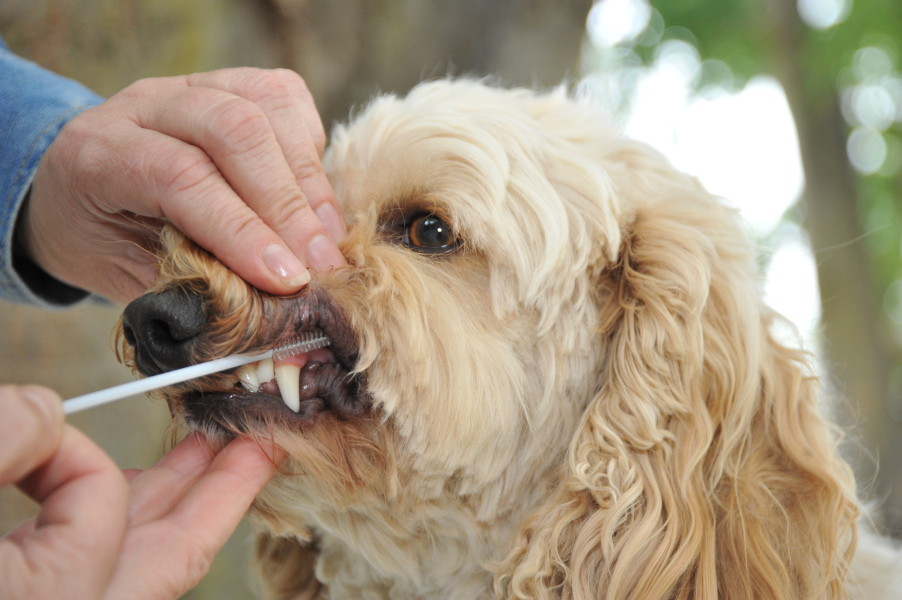Quick Summary
Click here for Price and Turnaround Time
Phenotype: Newborn pups affected by neonatal encephalopathy with seizures (NEWS) typically appear significantly weaker than littermates. If they survive the first week, mobility issues and seizures may be observed. Affected pups do not survive beyond seven weeks of age.
Mode of Inheritance: Autosomal recessive
Alleles: N = Normal, ES = Neonatal encephalopathy with seizures
Breeds appropriate for testing: Standard Poodle, Labradoodle, Goldendoodle, other Standard Poodle crosses and lineages
Explanation of Results:
- Dogs with N/N genotype will not have neonatal encephalopathy with seizures and cannot transmit this variant to their offspring.
- Dogs with N/ES genotype will not have neonatal encephalopathy with seizures, but are carriers. They will transmit this variant to 50% of their offspring. Matings between two carriers are predicted to produce 25% of puppies affected by neonatal encephalopathy with seizures.
- Dogs with ES/ES genotype will have neonatal encephalopathy with seizures, a fatal condition.
Results of this test can be submitted to the OFA (Orthopedic Foundation for Animals)
Sample Collection
Dog DNA tests are carried out using cells brushed from your dog's cheeks and gums. The preferred cytology brushes are sent to you by mail, or you may provide your own brushes. For accepted alternative brushes, click here
We recommend waiting until puppies are at least three weeks old before testing.

Step-By-Step:
- Make sure the dog has not had anything to eat or drink for at least 1 hour prior to collecting sample.
- When swabbing puppies, isolate each puppy from the mother, littermates and any shared toys for 1 hour prior to swabbing. Puppies should not have nursed or eaten for 1 hour prior to collecting sample.
- If collecting samples from more than one dog, make sure to sample one dog at a time and wash your hands before swabbing another dog.
- Label brush sleeve with name or ID of dog to be sampled.
- Open brush sleeve by arrow and remove one brush by its handle.
- Place bristle head between the dog’s gums and cheek and press lightly on the outside of the cheek while rubbing or rotating the brush back and forth for 15 seconds.
- Wave the brush in the air for 20 seconds to air dry.
- Insert brush back into sleeve.
- Repeat steps 5 - 8 for each unused brush in sleeve on a fresh area of cheek and gums. Make sure to use and return all brushes sent by the VGL. In most cases, it will be 3 brushes per dog. If using interdental gum brushes, please note that the VGL requires 4 brushes per dog and only moderate or wide interdental gum brushes are accepted.
- Do not seal brushes in sleeve.
- Place all samples in an envelope and return to the address provided.
ATTENTION:
- Do not collect saliva/drool – the key to obtaining a good sample is getting cheek cells on the swab
- Do not rub swab on the dog’s tongue or teeth – this will result in poor quality sample
- Do not collect a sample from a puppy that has recently nursed – the mother’s genetic material can rub off on the puppy’s mouth and contaminate the sample
Neonatal encephalopathy with seizures (NEWS) is an inherited progressive brain disease of Standard Poodles caused by a mutation in the activating transcription factor 2 (ATF2) gene. NEWS is inherited in an autosomal recessive fashion thus both sexes are equally affected. Two copies of the defective gene must be present to cause the disease. Effects of the disease can be observed in newborn pups which typically appear significantly weaker than littermates. If they survive the first week, mobility issues and seizures may be observed. Affected pups do not survive beyond seven weeks of age. The NEWS mutation is widespread across Standard Poodle lineages and colors. Dog breeds developed with Standard Poodle breeding stock are at risk of NEWS. Dogs with one normal and one mutated ATF2 gene (carriers) are unaffected but breeding two carriers together would be predicted to produce 25% affected offspring and 50% carriers.
Testing for NEWS assists owners and breeders in identifying affected and carrier dogs. Breeders can use results from the test as a tool for selection of mating pairs to avoid producing affected dogs.
